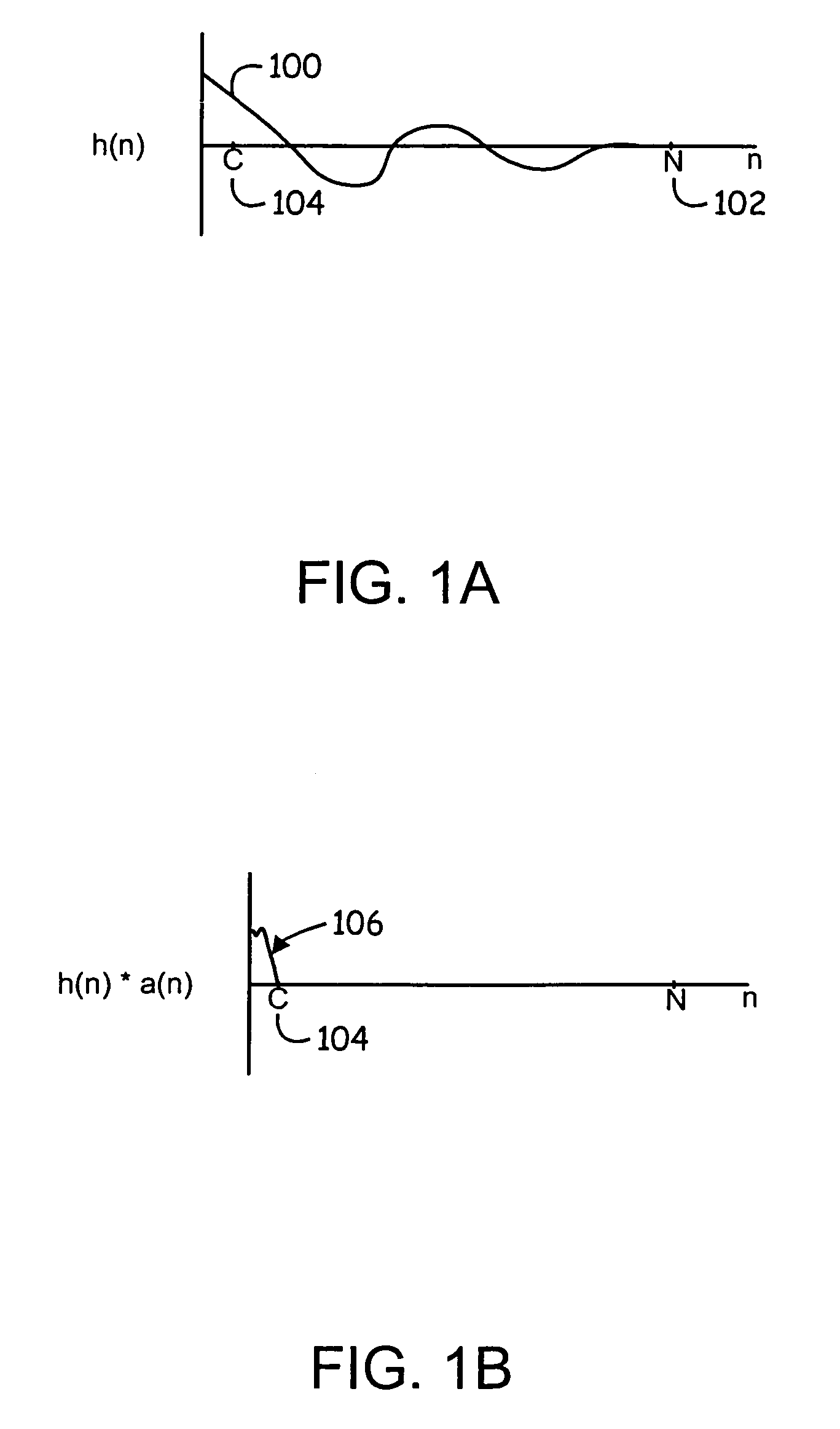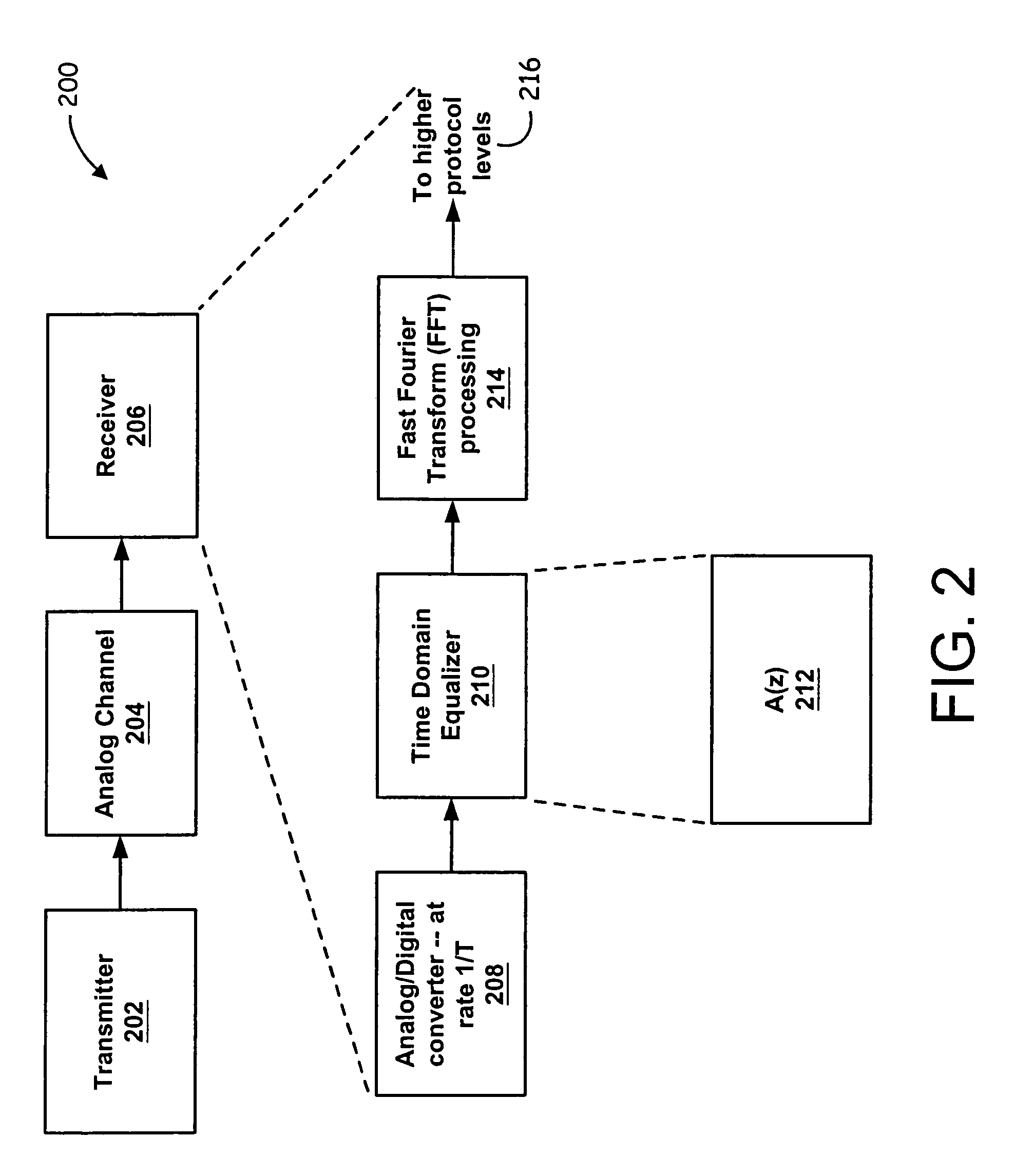Non-iterative time-domain equalizer
a time-domain equalizer and non-iterative technology, applied in the field of non-iterative time-domain equalizer, can solve the problems of frequency-domain method problems, waste of additional samples, etc., and achieve the effect of minimizing error signals and minimizing errors
- Summary
- Abstract
- Description
- Claims
- Application Information
AI Technical Summary
Benefits of technology
Problems solved by technology
Method used
Image
Examples
Embodiment Construction
[0029]The present invention is described below in terms of certain preferred embodiments and representative applications. It is meant to be generally applicable to all systems and not meant to be limited to any specific configurations described herein.
[0030]The present invention is a non-iterative method of designing a TEQ for any application that might use one. FIG. 2 shows a representative block diagram 200 of a transmitter 202, which sends a signal through an analog channel 204, which is then received by a receiver 206. The receiver is then further comprised of an analog-to-digital convener 208, which converts at a rate of 1 / T (with T being the period of the incoming signal). The signal is then passed to a Time Domain Equalizer (TEQ) 210, which is shown to have a z-domain response of A(z) 212. The equalized signal is thereafler passed to a Fast Fourier Transform (FFT) 214 for conversion of the signal. Thereafter, the signal is shown passing to higher protocol levels 216 uf the re...
PUM
 Login to View More
Login to View More Abstract
Description
Claims
Application Information
 Login to View More
Login to View More - R&D
- Intellectual Property
- Life Sciences
- Materials
- Tech Scout
- Unparalleled Data Quality
- Higher Quality Content
- 60% Fewer Hallucinations
Browse by: Latest US Patents, China's latest patents, Technical Efficacy Thesaurus, Application Domain, Technology Topic, Popular Technical Reports.
© 2025 PatSnap. All rights reserved.Legal|Privacy policy|Modern Slavery Act Transparency Statement|Sitemap|About US| Contact US: help@patsnap.com



